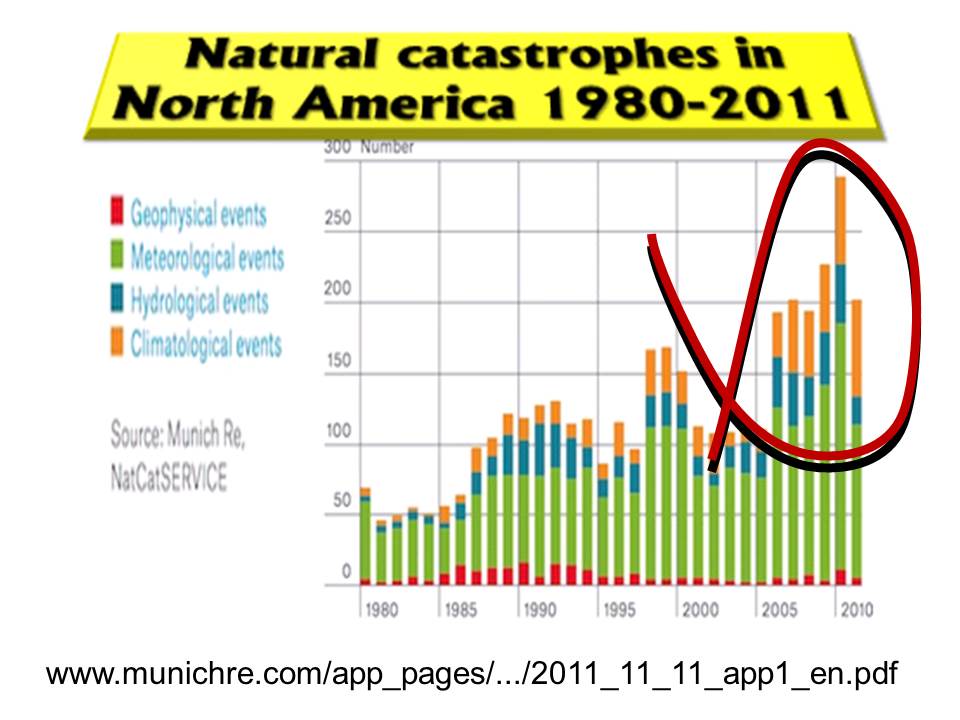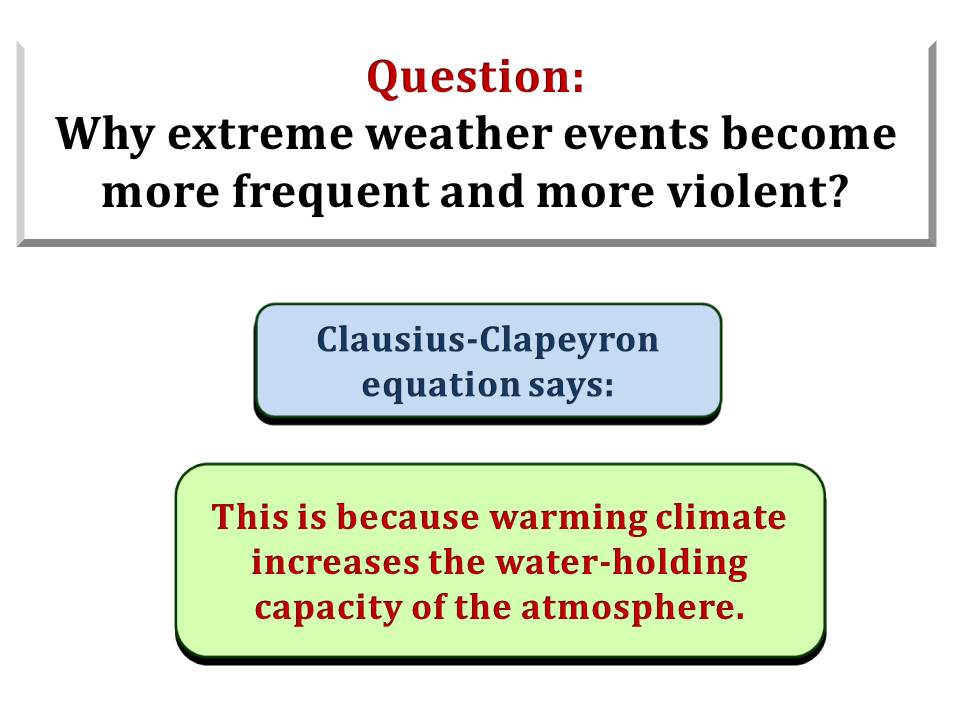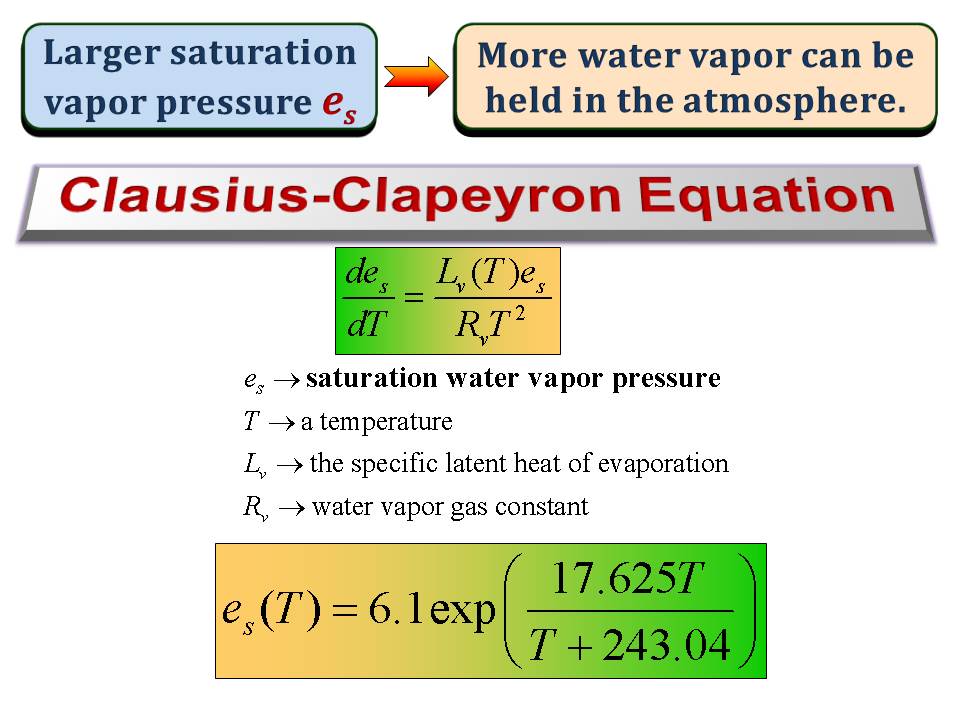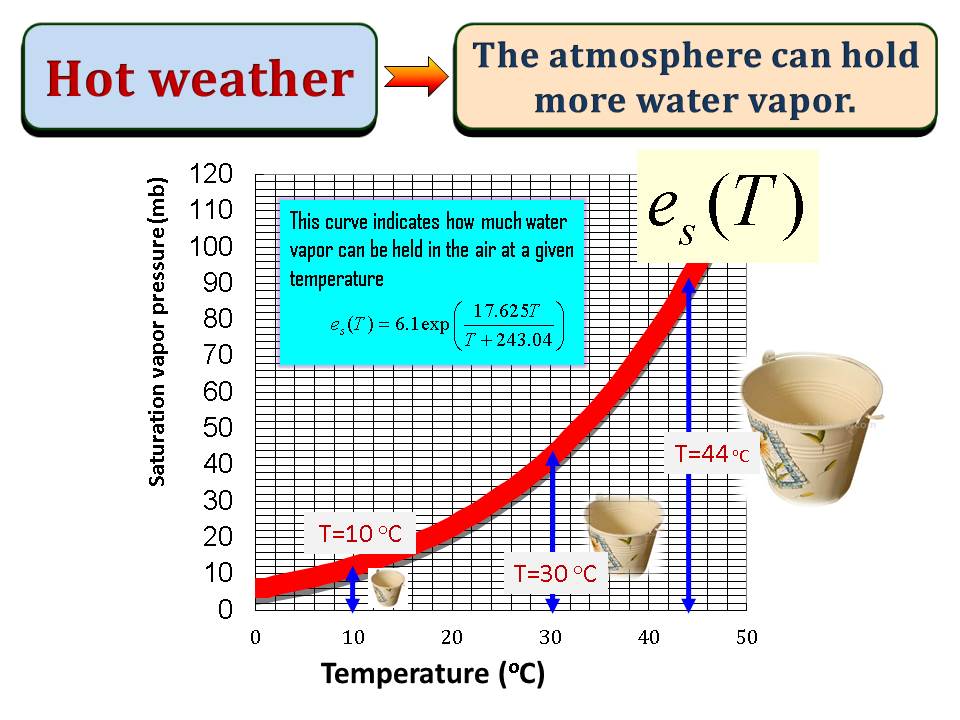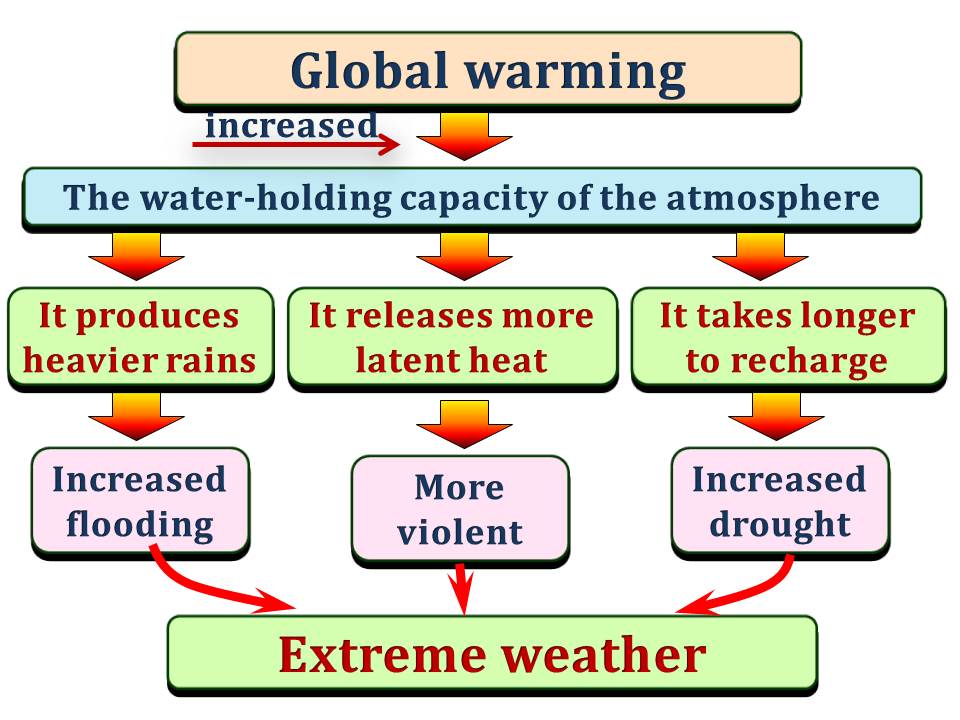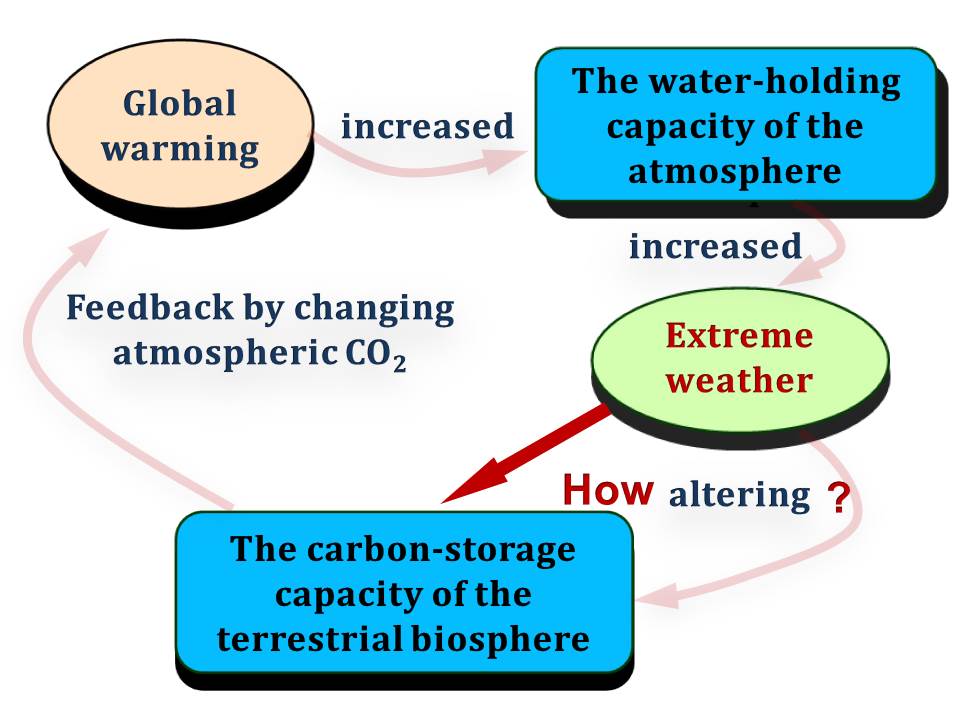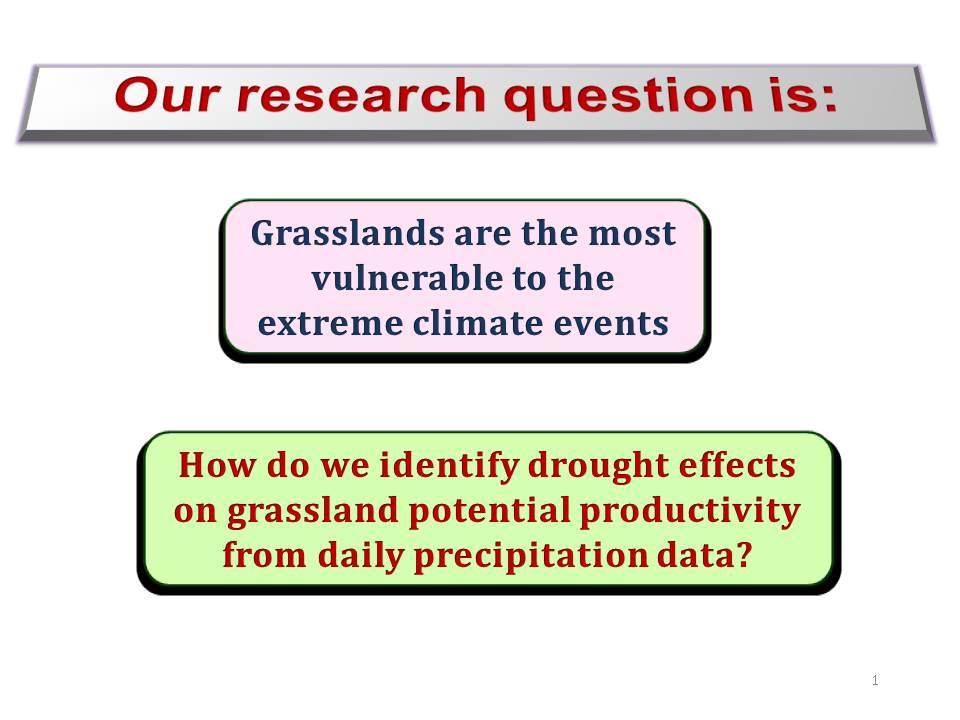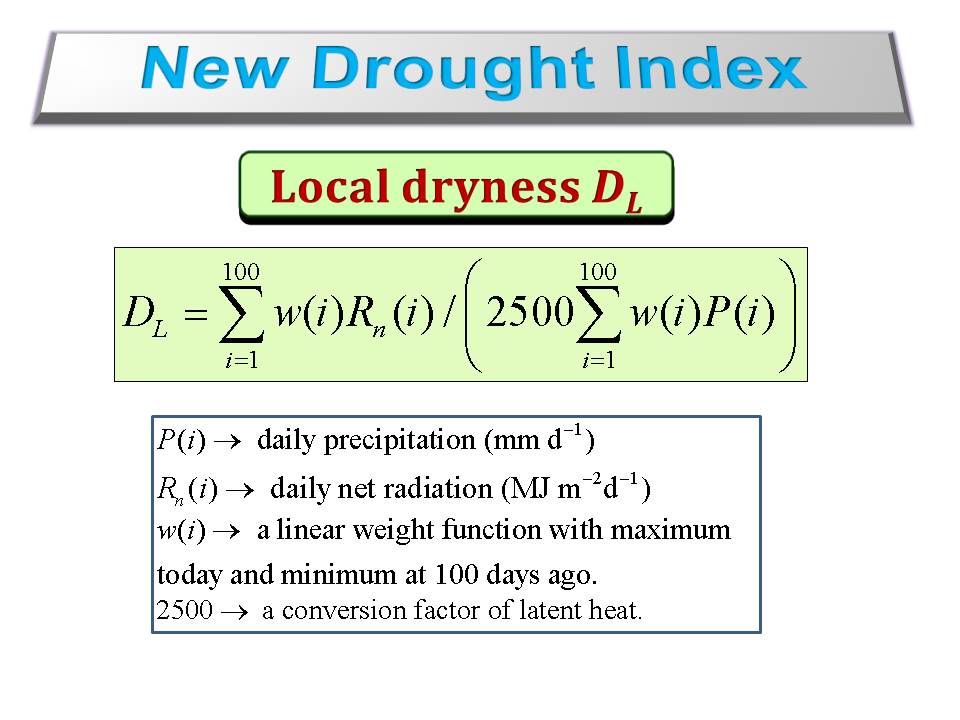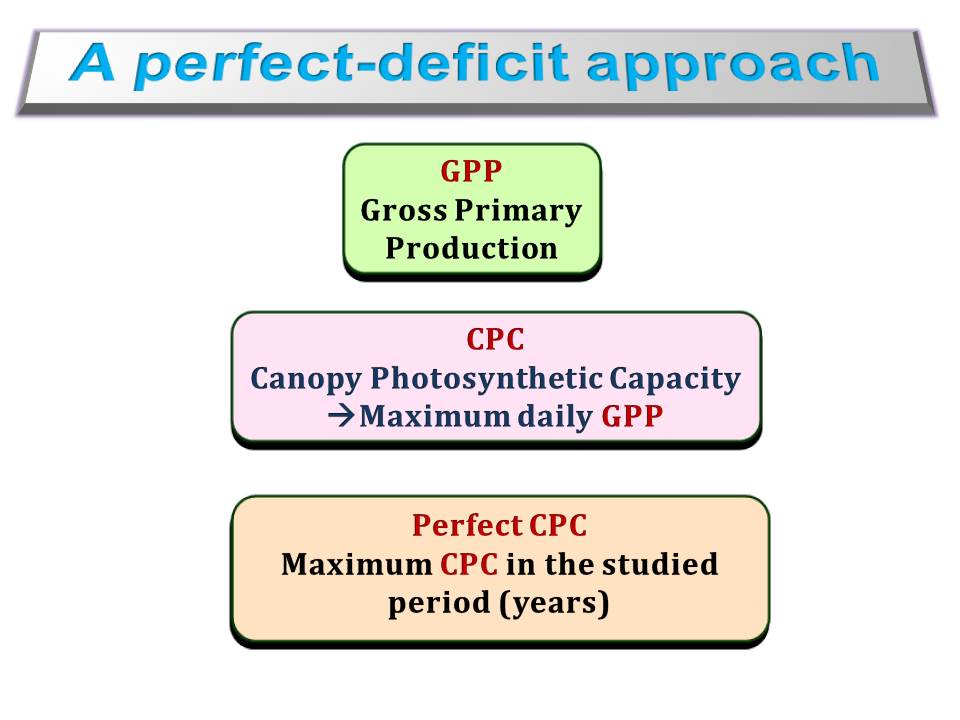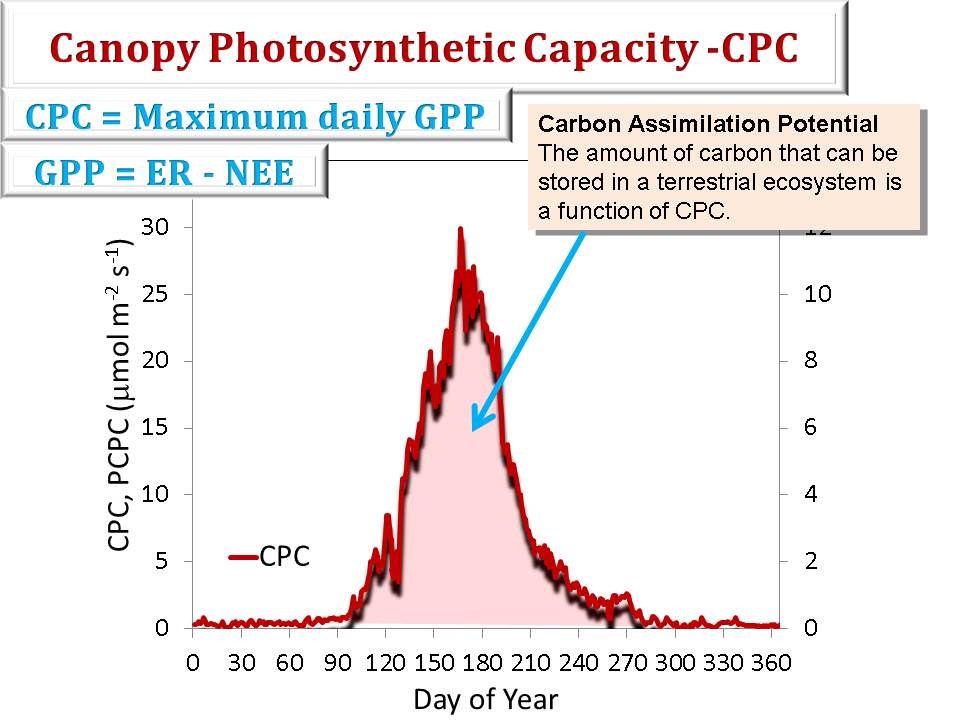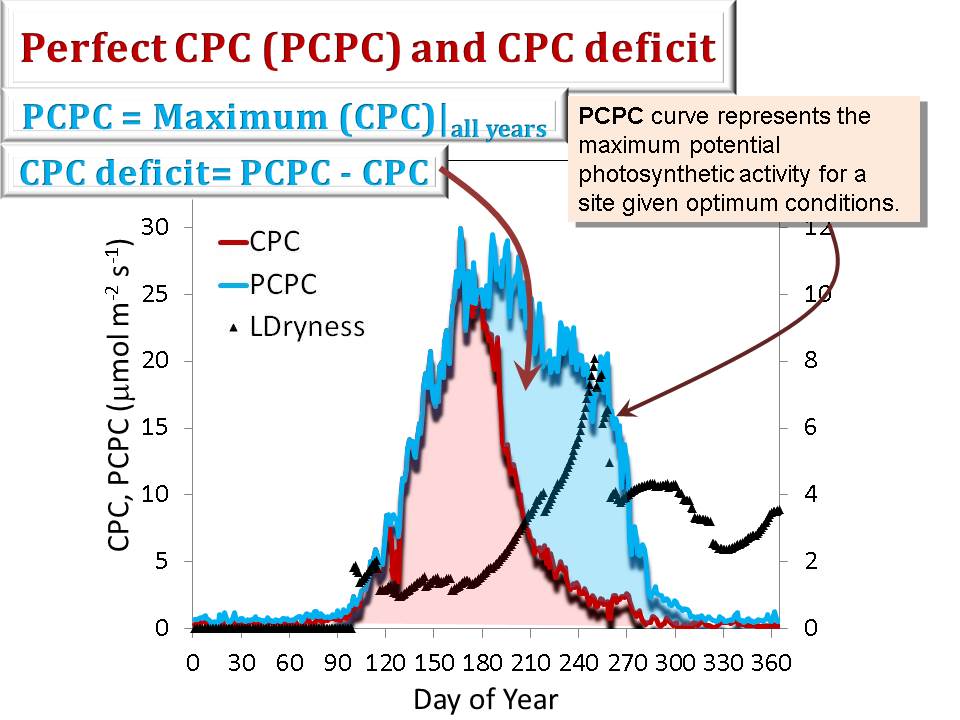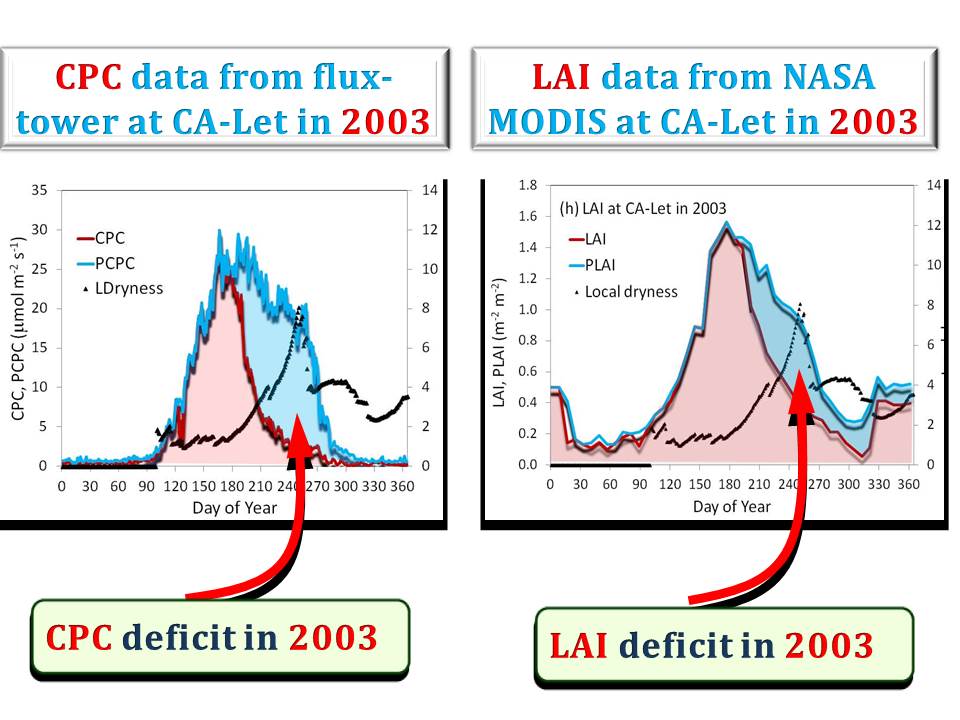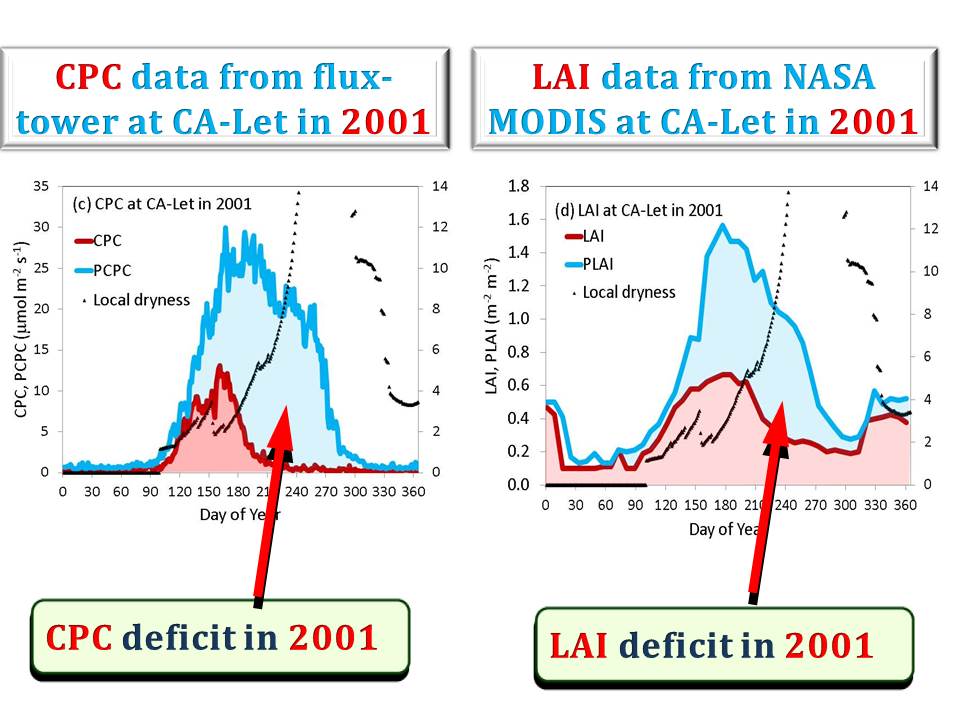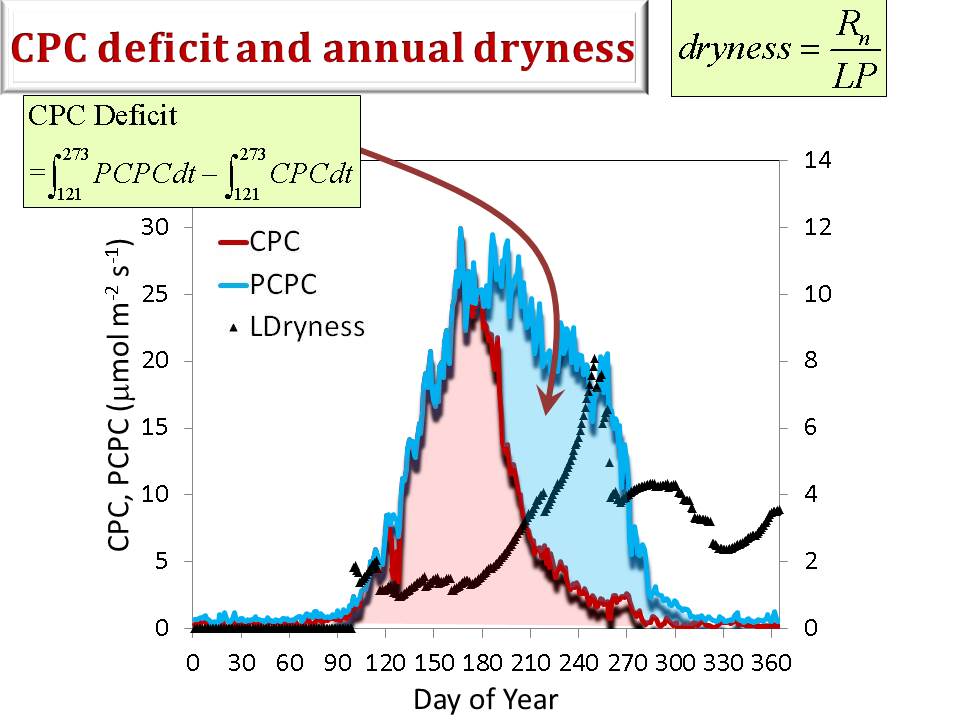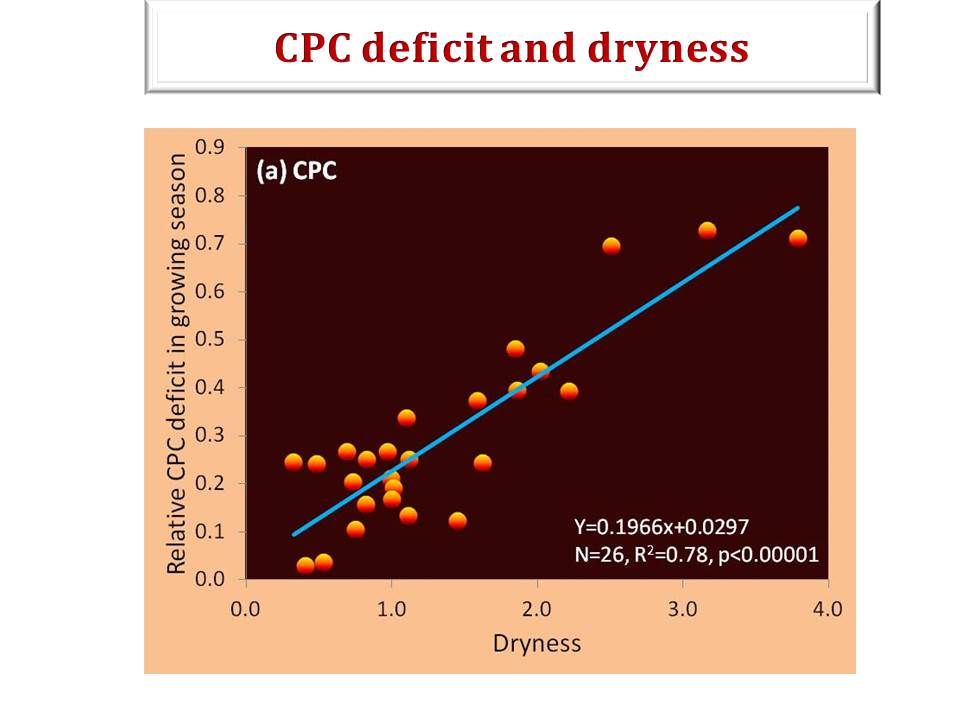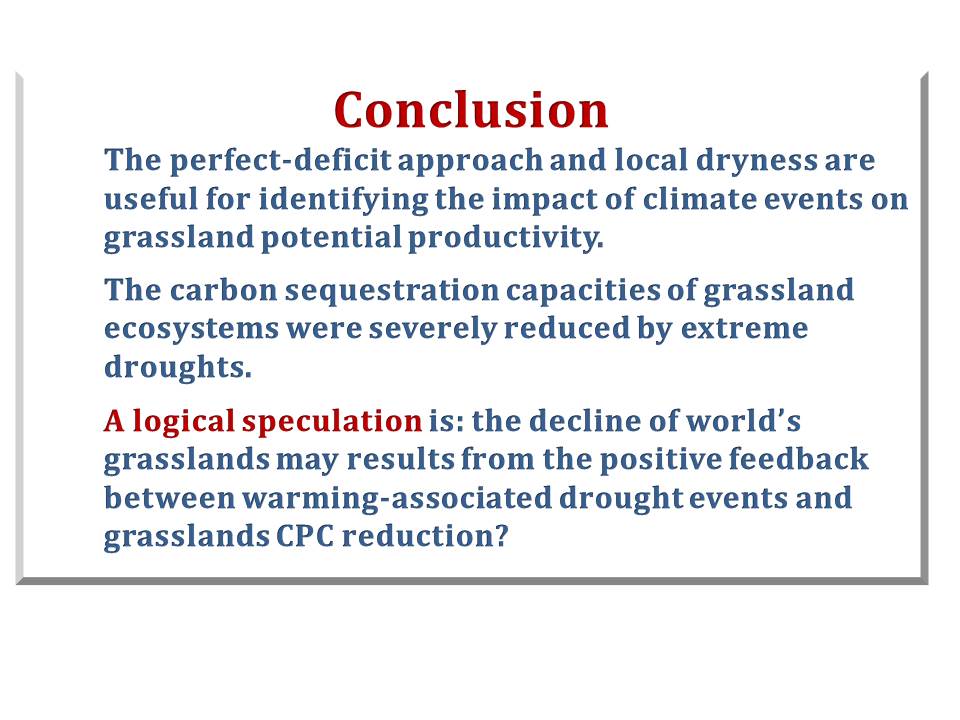|
|
|
| Home | Personnel | Research | Publications | Current Offering | |
|
CFD modeling |
|||||
|
A Perfect-Deficit Approach This was supported by U.S. National Science Foundation (NSF-DEB-0949637) Data show that extreme weather is becoming more frequent and severe and Yi et al., 2012 explores the effect of extreme weather events on the carbon-storage capacity of the terrestrial biosphere. We examined data on CO2 flux, evapotranspiration, sensible heat, air temperature, net radiation and photosynthetic active radiation from five FLUXNET grassland sites, along with leaf-area index information derived from satellite data. We developed a novel technique, called the "perfect-deficit" approach that assigns maximum growth observed in each day-of-the-year (DOY) over a period of 10 or more years, thus synthesizing a "perfect" annual growth curve that can be compared to other years. The difference between the 'perfect curve' and the curve of any other year shows a deficit in plant growth and that deficit is highly correlated to weather, particularly to extreme weather. This exciting approach can be used to identify the relationship between extreme weather and ecosystem production loss.
|


